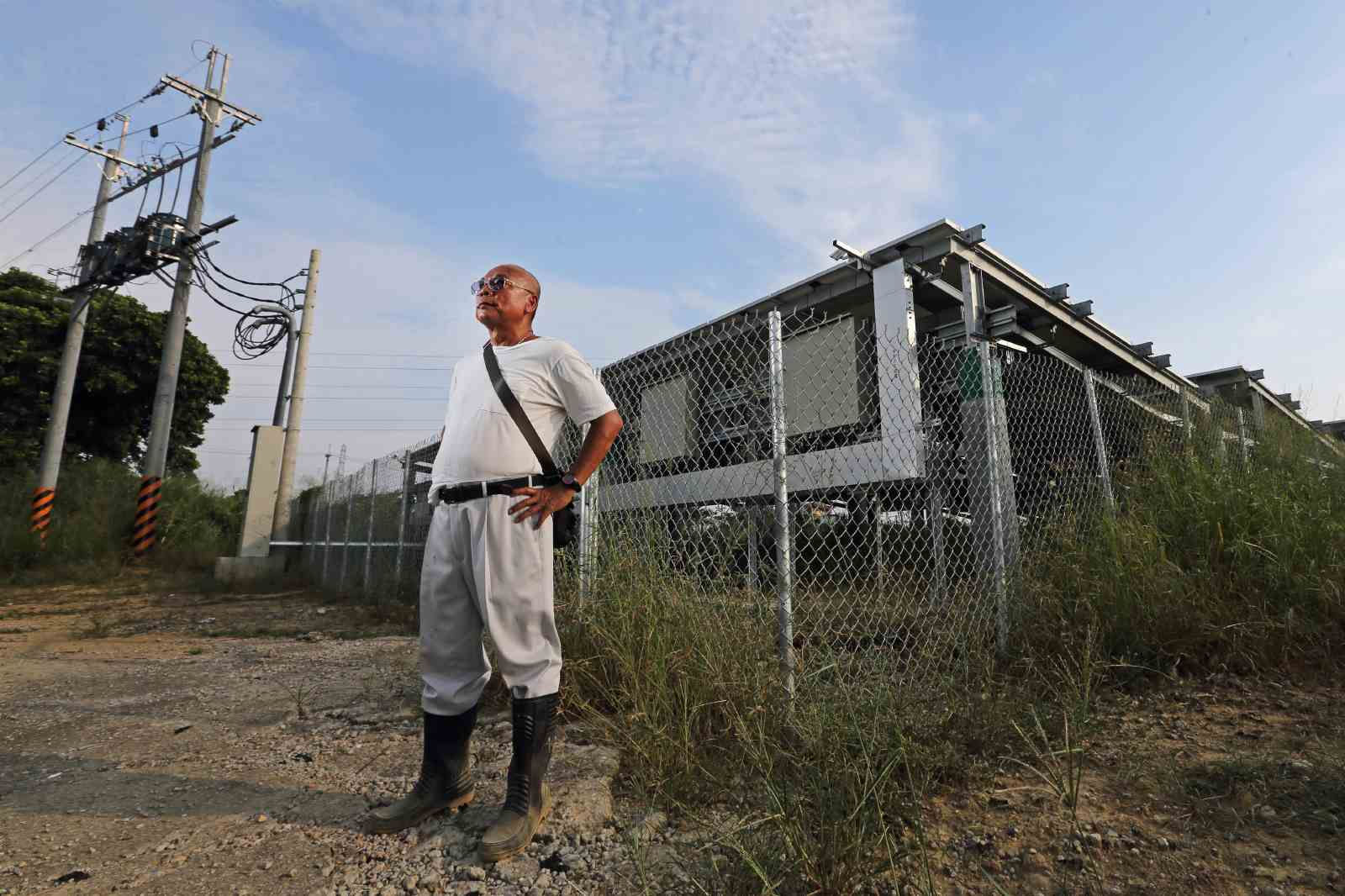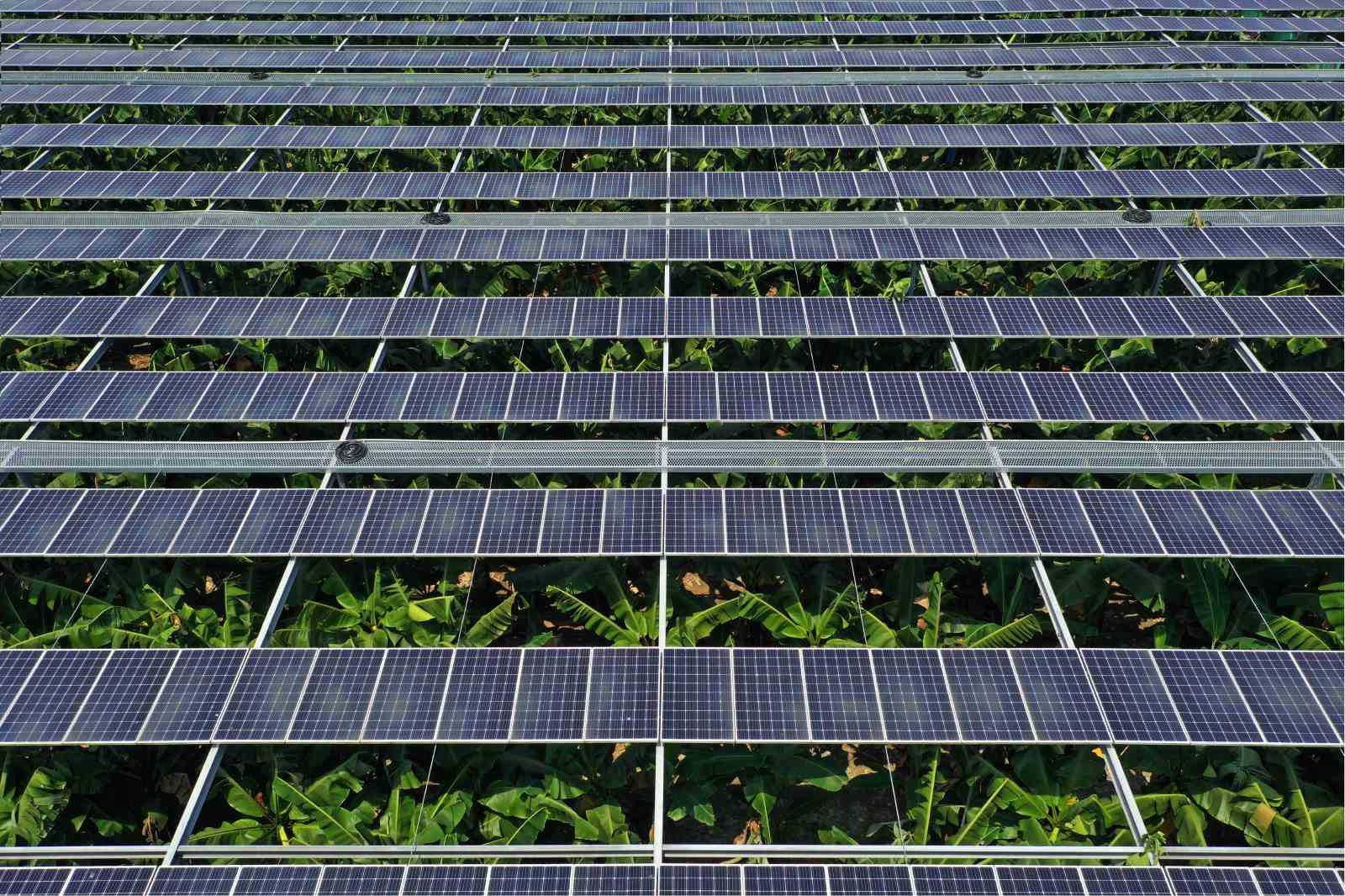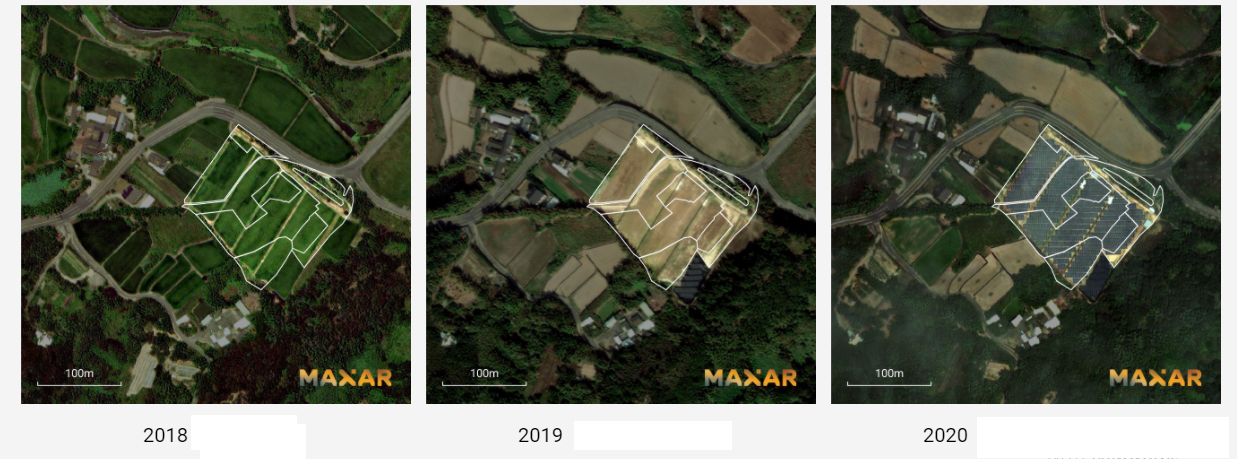‘Solar Power Fat Cats’: Green Energy Reduced to Money-making Game

Source:Chien-Tong Wang
Taiwan has made a big push to develop solar power, but in the process financial incentives are distorting the market and hurting the environment. CommonWealth Magazine takes a closer look at the downside of solar power development in Taiwan.
Views
‘Solar Power Fat Cats’: Green Energy Reduced to Money-making Game
By Kwangyin Liu, Kuo-Chen Lu; Research: Sophie Lin, Sylvia Lee, Daniel Kaoweb only
“It’s making money for me even when I take a midday nap,” Wei Jung-hua (魏榮華), a landowner in Guanmiao District in Tainan, said of the two-hectare plot of farmland he rented to solar power operators.
As he was driving his white Porsche toward the site, Wei talked about how much more lucrative this arrangement has been compared with renting the land to farmers. “The rent solar operators are paying me is at least 10 times higher than what I could get from farmers. When I heard what they were offering, I signed a deal the next day,” he said.

The winds of solar power are gusting across Taiwan, amid efforts to make the island less dependent on fossil fuels, but those winds are turning the promise of renewable energy into shortcuts for making a quick fortune. They have infected the entire island and penetrated rural villages, and are setting off a rapidly growing conflict between power generation and the preservation of land and farms.
At the heart of the conflicts are the huge incentives created by green energy. Like the many dolls stacked inside a Russian doll, rural solar installations offer several layers of profit – five to be precise – with the rent paid to a landowner only the beginning.
The second cut goes to the real estate broker. Brokers who succeed in pushing a project until an “establishment permit” can be obtained stand to make NT$5.5 million in commission for every hectare of land converted into a solar power field. One or two big deals can be enough for these middlemen to retire on.
The third and even more lucrative layer of profit goes to the solar power developer. The electricity generated on a hectare of land sells for about NT$5.78 million, earning a net profit of about NT$2 million. Developers need no more than seven years to recoup their original investment.
If that windfall from electricity profits is not appealing enough, developers can extract a quick and hefty profit from foreign concerns. One solar power developer revealed this fourth layer of profit: selling solar power stations that are ready to roll to foreign buyers. After deducting development costs and engineering costs, developers can clear a profit of at least NT$10 million per hectare on such deals.
The fifth layer is the most ruthless – “laundering” farmland into land for industrial use, which can make the land three to five times more valuable.
One solar power insider revealed that one developer rented more than 100 hectares of farmland in southern Taiwan with ulterior motives, writing into the lease agreement that “efforts will be made toward converting the land into industrial-use land in the future.” The idea was to give the landowner more of an incentive to allow development of the land.
Market Distortion
Photovoltaic power has begun to proliferate around Taiwan in recent years in response to the government’s goal of putting in 20GW of solar power installed capacity by 2025, but the financial motives have driven the spread more than environmental ideals.
“Attributing [the growth of solar power] to sustainability is too noble. What farmers want is simple, and that’s a decent livelihood,” said one solar power developer in Pingtung.
Yet the logic of profits has distorted the market.
“It’s now tantamount to using taxpayer funds to bully agriculture,” said Hsu Shih-hsun (徐世勳), a professor in National Taiwan University’s Department of Agricultural Economics, noting that the purchase price of over NT$4 per kWh for solar power is paid directly by taxpayers through the subsidization of solar energy by state-owned utility Taiwan Power Company (Taipower).
To landowners, renting a hectare of land to solar power operators generates NT$400,000 a year, and only a fool would pass that up to cultivate the land, he argued.

“To prevent that, the government would have to further subsidize agriculture to match the income from renting to solar power operators,” he said.
So how has Taiwan arrived at this point where greed and profits drive investment in renewable energy rather than a desire to foster a more sustainable environment or breathe cleaner air?
It’s likely because the urgency to develop solar power has been unleashed by the most basic of market forces, the inability of Taiwan’s renewable energy supply to meet demand.
Taiwan currently has 5GW of solar power installed capacity, well short of the goal of 6.5GW set for 2020. At the same time, demand for renewable energy has soared as overseas Taiwanese businesses have moved some of their operations back home to steer clear of the U.S.-China trade war.
The latest CommonWealth Magazine Top 2000 CEO Survey found that 70 percent of the heads of Taiwan’s 2,000 biggest companies plan to invest in Taiwan this year, continuing the trend seen over the past three years since the trade war erupted. And as that has pushed demand for electricity even higher, international clients are pressuring their suppliers to meet all their power needs with green energy.
Yet the total generation of renewable energy in Taiwan is barely enough to satisfy just the needs of its most influential company, TSMC. Based on the contract chipmaker’s CSR Report, it used about 13.36 billion kWh of power in Taiwan in 2019, roughly the same as the 14 billion kWh of power generated by the country the same year.
Today, all of Taiwan’s companies, from the most powerful manufacturers to its many small and medium-sized enterprises, want green electricity, and financial institutions have taken the push a step further with ESG and green finance initiatives.
Destroying Hillside Land
But do they really know where the green energy they are buying is being generated?
If the profit motive is allowed to dominate, it will be hard to guarantee that the green electricity purchased by major high-tech players is not generated at the expense of land that should be farmed or protected.
One example are the mountain areas of Miaoli County, home to an endangered species, the Taiwanese Leopard Cat.
 (Source: Wikipedia)
(Source: Wikipedia)
“About 85 percent of Miaoli’s land area is hilly. And the area in western Taiwan where the natural environment is best preserved is Miaoli,” said Chen Chi-chung (陳祺忠), a board director of the Leopard Cat Association of Taiwan.
But installed solar power capacity is growing faster in Miaoli County than in most other cities and counties in Taiwan, rising nearly 25-fold between 2016 and October 2020, according to Taipower statistics.
About 70 percent of that capacity can be found on hilly terrain.
Based on Miaoli County government documents showing the lots of land that have successfully been rezoned for solar power development, CommonWealth Magazine calculated that more than 19 hectares have been approved. When those lots were matched with Ministry of the Interior land documents, we discovered that 70 percent of that land was conserved hillside land. The other 30 percent was farmland.
Based on exclusively obtained satellite images, we were then able to compare those lots before and after being affected by solar power interests, and what we saw was shocking. The most striking example was five separate lots of land in the Beishiwo area of Tongxiao Township that together form a nearly two-hectare solar power field.
The dense forest seen on that land on satellite images as recently as October 2018 had been nearly razed by December 2019 and solar panels were being installed. By July 2020, solar panels covered the entire hillside and were generating electricity.

A similar phenomenon is being seen on a hillside in the county’s Xihu Township.
The 1.9-hectare solar farm was originally a conservation area, and was still lush green terrain in satellite images from October 2018. By December 2019, signs were evident that work was being done on the land, and by July 2020 it had been turned into a neatly shaped swath of soil. Four months later, a CommonWealth team visited the site and found that hundreds of cement piles had been driven into the ground and a few excavators were busy at work.

Because of objections to these developments, public authorities are now caught trying to balance the pressures of the environment and vested interests.
The Council of Agriculture (COA) issued a directive that took effect on Aug. 1, 2020, banning the approval of converting plots of farmland smaller than two hectares into a solar power field, unless it involved “scattered lots of farmland that are surrounded by or included in land zoned for other purposes.” It also allowed counties to continue to review projects involving land areas of 2-30 hectares, but those projects now require approval from the COA to rezone the land.
In effect, however, the directive has put Miaoli County in a bind. More than 200 small solar power projects in Miaoli received an establishment permit from Taipower and were reviewed and approved by the county’s Economic Development Department before Aug. 1, 2020, and work has even begun on many of them. But those hundreds of projects are now pending new environmental reviews by the county based on the COA directive.
How county authorities respond could set the standard for the future. Leopard Cat Association board director Lee Jing-hong (李璟泓), who himself is a farmer, hopes unbridled solar power development can be curtailed.

Since 2014, he and his family have cultivated rice without using pesticides or fertilizers, and he is concerned about the trend toward clearing conserved land for solar power installations.
“Shouldn’t we first consider where it makes sense to install solar power?” he wondered.
As the world increasingly embraces green energy, Taiwan has been intent on keeping up with the trend. It must keep in mind, however, that haste can make waste. Solar power’s promise has largely been founded on its benefits for the environment, yet has somehow emerged in Taiwan as a major culprit in cannibalizing land. But it is not too late to remedy the situation.
Have you read?
♦ Taiwan’s Solar Power Dream Collides with Reality
♦ How Can Solar Power Arrays Co-exist with Nature?
♦ How renewable energy infrastructure could accelerate Asia’s green future
Translated by Luke Sabatier
Uploaded by Penny Chiang






